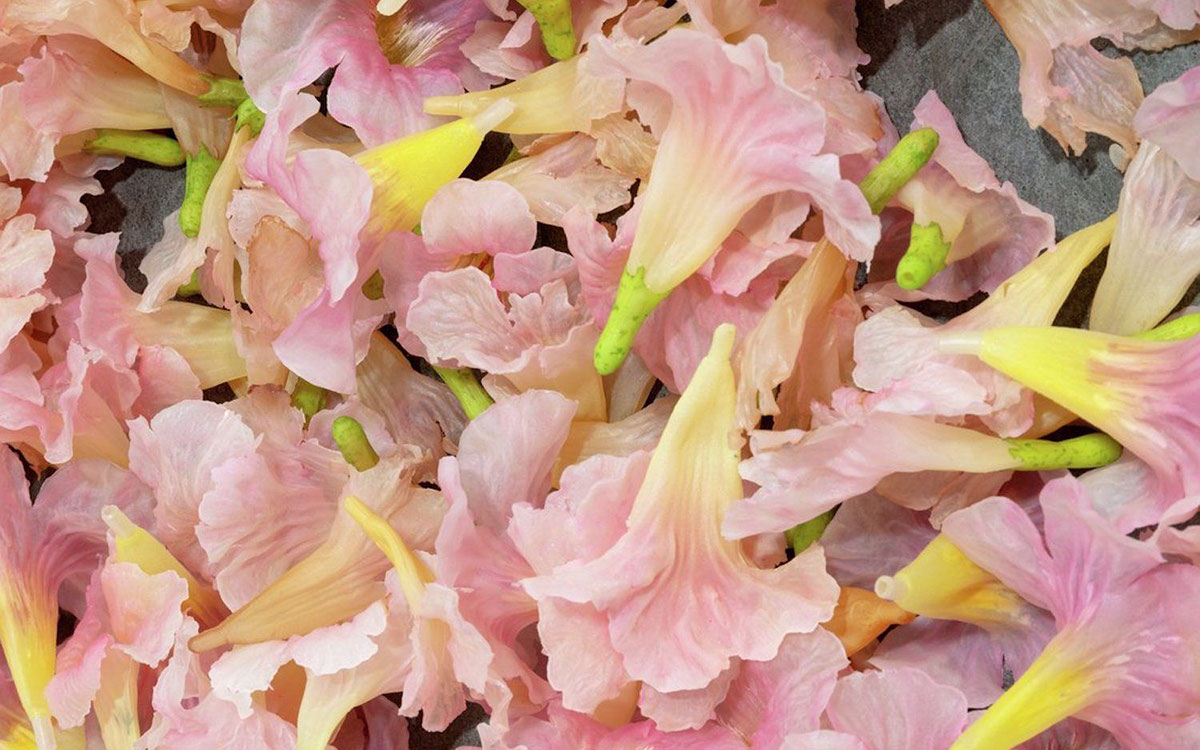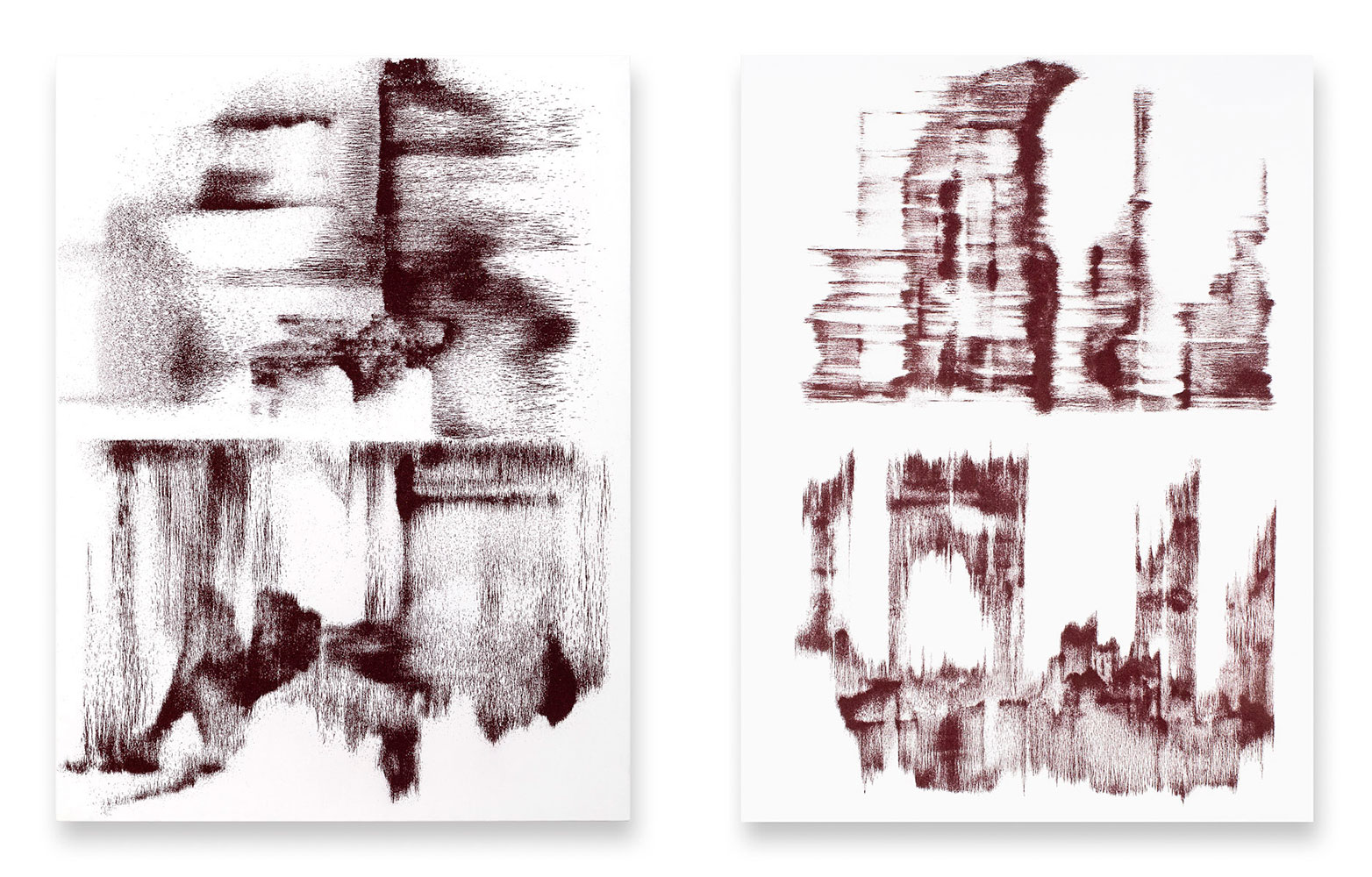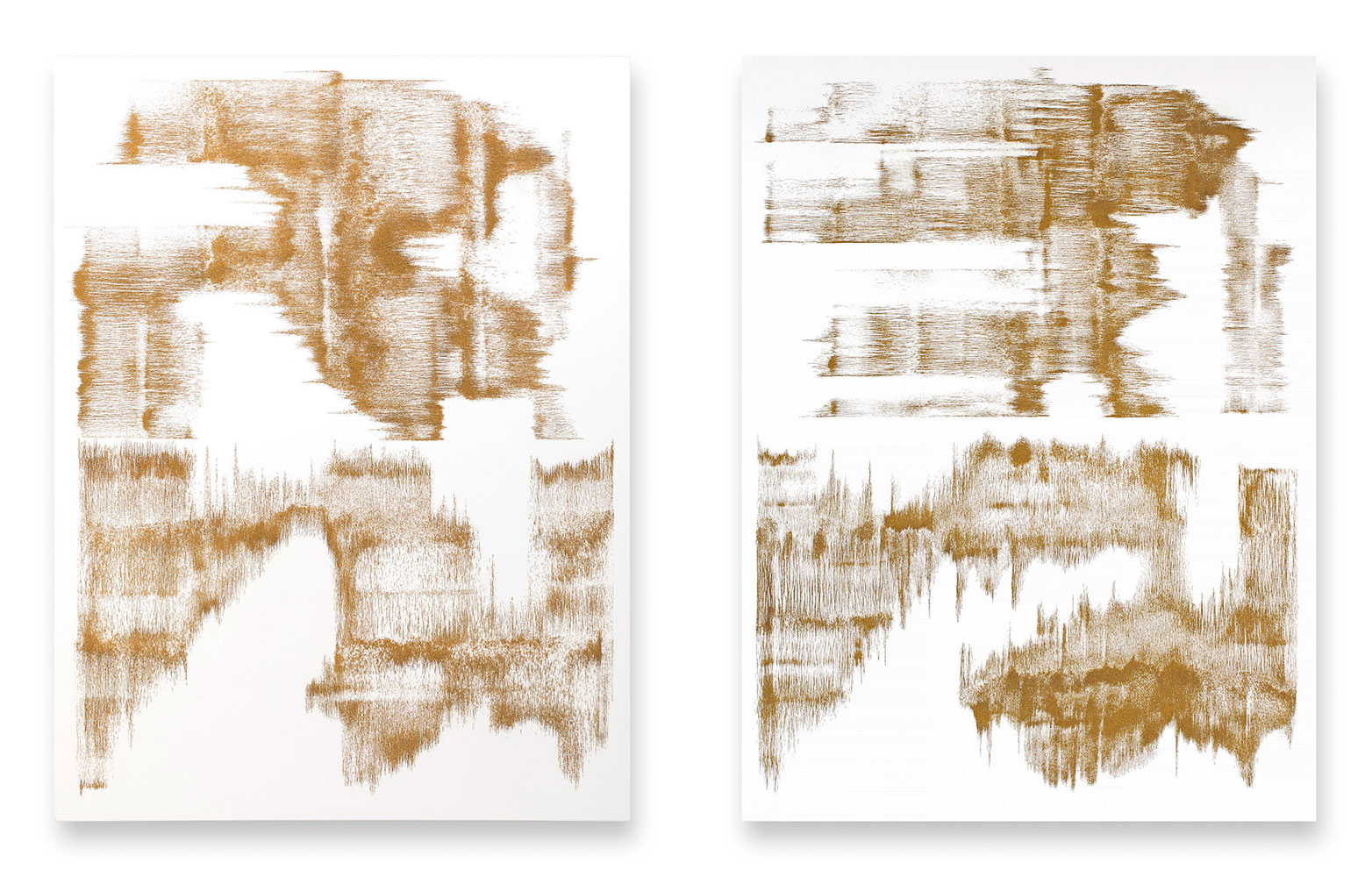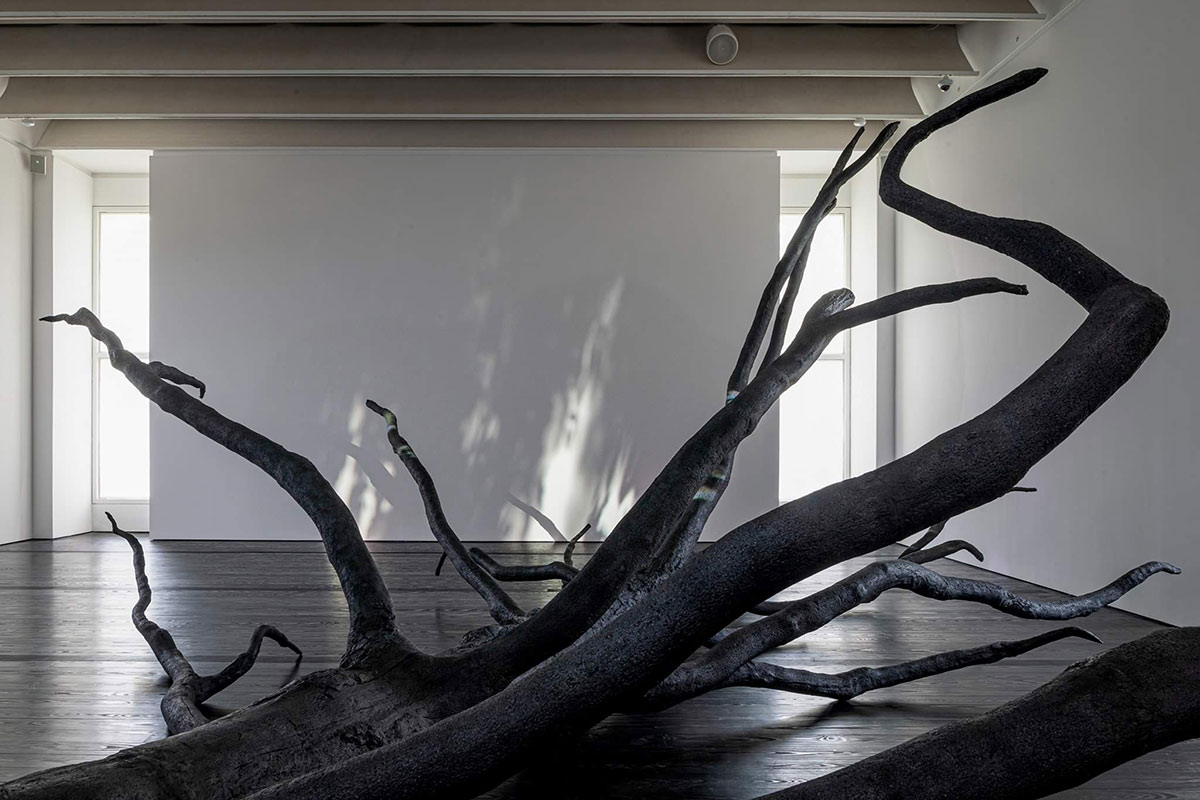ART CITIES:Paris-Allora & Calzadilla
 Collaborating since 1995, Allora and Calzadilla approach visual art as a set of experiments that test whether ideas such as authorship, nationality, borders, and democracy adequately describe today’s increasingly global and consumerist society. Their works explore the physical and conceptual act of mark-making and its survival through traces. By drawing historical, cultural, and political metaphors out of basic materials, Allora and Calzadilla’s works explore the complex associations between an object and its meaning.
Collaborating since 1995, Allora and Calzadilla approach visual art as a set of experiments that test whether ideas such as authorship, nationality, borders, and democracy adequately describe today’s increasingly global and consumerist society. Their works explore the physical and conceptual act of mark-making and its survival through traces. By drawing historical, cultural, and political metaphors out of basic materials, Allora and Calzadilla’s works explore the complex associations between an object and its meaning.
By Efi Michalarou
Photo: Galerie Chantal Crousel Archive
Allora & Calzadilla’s exhibition “Antille” brings together three major works that centre on the Caribbean where the artists live and work. Grounded in the concrete realities of this complex archipelago, the works in Antille consider how colonialism and ecology intersect with Empire building. Throughout the gallery the artists have installed “Penumbra” (2020) a virtual landscape that takes the shape shifting qualities of light and shadow as its substance. The projected digital animation recreates the effect of light passing through foliage in the Absalon Valley of Martinique. This tropical forest was the site of a series of now-mythic hikes that took place in 1941 with Suzanne and Aimé Césaire and a group of artists and intellectuals fleeing Nazi-occupied France, whose boat had temporarily docked at the West Indian port of Fort-de-France. The refugees included Helena Benitez, André Breton, Wifredo Lam, Jacqueline Lamba, Claude Lévi-Strauss, André Masson, and Victor Serge, among others. “Penumbra” is projected in the gallery at an angle based on a real-time simulation of the sun’s location overhead. The artificial light flickers across the space and intermingles with dancing patterns of the sun passing through clouds moving over Paris. Through this interaction, two disparate places converge and create a paradox of light. “Penumbra” is complemented by a musical composition by David Lang and inspired by “shadow tones”, a psycho-acoustic phenomenon perceived when two real tones create the semblance of a third. Also installed throughout the space is “Graft” (2021). Thousands of pink blossoms, cast from the flowers of roble trees, an oak species native to the Caribbean, appear as though a wind has swept them across the floor. The hand- painted petals are reproduced in seven variations or degrees of decomposition, from the freshly fallen to the wilted and brown. Graft alludes to environmental changes that have been set in motion through the interlocking effects of colonial exploitation and climate change. Systemic depletion of Caribbean flora and fauna is one of the primary legacies of colonial rule. Nonetheless, the region remains one of thirty-six biodiversity hotspots, areas that support nearly 60% of the world’s plant, bird, mammal, reptile, and amphibian species but that amount to just 2.4% of the earth’s land surface. In their plastic and unnatural stillness, the flowers in Graft reflect this fragile ecological predicament. Finally on view are three recent works from the artists “Electromagnetic Field” series, initiated in 2018, which takes electromagnetism, one of the four fundamental forces of nature, as its subject and medium. The artists experiment with electromagnetism to create forms that are at once abstract and referential. They drop iron filings on top of a canvas and place it above an array of copper cables connected to an electrical breaker in their studio in San Juan. When the breaker is turned on, the electrical current forces the particles into an arrangement of shapes and patterns governed by the electromagnetic field. To set them in motion, the taut canvas is continuously tapped which sends the heavy bits airborne and towards the positive and negative poles. The parenthetical component of the work’s title, a lengthy sequence of numbers and letters that they took from their studio electric bill refers to the politics related to the generation, ownership, and distribution of electricity. It is part of the artists’ ongoing interest in using electricity in their art to probe the many facets and figures involved in energy consumption in Puerto Rico and beyond, from the oil futures market and transnational holders of the Puerto Rico Electric Power Authority’s bond debt to the local consumers who suffer the consequences of the bankrupt power authority’s fiscal mismanagement. Allora & Calzadilla’s artistic experiments with electromagnetism are in equal part an exploration of formal principals and a way of confronting the complex nexus that is the energy grid.
Photo: Allora & Calzadilla, Graft (Detail), 2021, Recycled polyvinyl chloride, edition of 3, Dimensions variable, © Allora & Calzadilla, Courtesy Galerie Chantal Crousel
Info: Galerie Chantal Crousel, 10 rue Charlot, Paris, France, Duration: 15/4-28/5/2022, Days & Hours: tue-Fri 10:00-18:00, Sat 11:00-19:00, www.crousel.com/

Right: Allora & Calzadilla, Electromagnetic Fields: May 14, 2021 (Meter Number 96215234, Consumption Charge 425kWh x $0.04944, Consumption Charge for Additional 2,385kWh x $0.05564, Fuel Charge Adj 2,810kWh x $0.095456, Purchased Power Charge Adj 2,810kWh x $0.029607, Municipalities Adj 2,810kWh x $0.004094, Subsidies, Public Light & other Subv HH, 2,810kWh x $0.008991, Subsidies, Public Light & other Subv NHH 2,810kWh x $0.001357), 2021, 56 x 42 inches (142.2 x 106.7 cm), Iron on linen, 40 x 30 inches (101.6 x 76.2 cm), © Allora & Calzadilla, Courtesy Galerie Chantal Crousel

Right: Allora & Calzadilla, Electromagnetic Fields: August 12, 2021 (Meter Number 96215234, Consumption Charge 425kWh x $0.04944, Consumption Charge for Additional 2,735kWh x $0.05564, Fuel Charge Adj 3,160kWh x $0.106237, Purchased Power Charge Adj 3,160kWh x $0.034029, Municipalities Adj 3,160kWh x $0.003235, Subsidies, Public Light & other Subv HH, 3,160kWh x $0.010368, Subsidies, Public Light & other Subv NHH 3,160kWh x $0.000522), 2021, Iron on linen, 84 x 63 inches (213.4 x 160 cm), © Allora & Calzadilla, Courtesy Galerie Chantal Crousel

Right: Allora & Calzadilla, Electromagnetic Fields: March 11, 2021 (Meter Number 96215234, Consumption Charge 425kWh x $0.04944, Consumption Charge for Additional 1,985kWh x $0.05564, Fuel Charge Adj 2,410kWh x $0.082695, Purchased Power Charge Adj 2,410kWh x $0.027114, Municpalities Adj 2,410kWh x $0.004094, Subsidies, Public Light & other Subv HH, 2,410kWh x $0.008991, Subsidies, Public Light & other Subv NHH 2,410kWh x $0.001357), 2021, Iron on linen, 40 x 30 inches (101.6 x 76.2 cm), © Allora & Calzadilla, Courtesy Galerie Chantal Crousel

